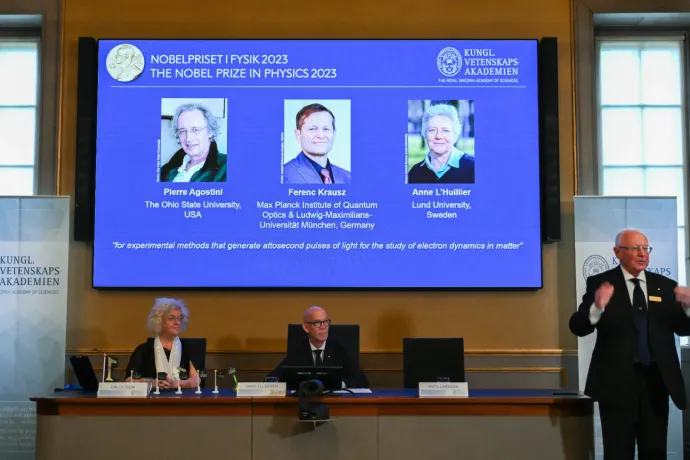
Ferenc Krausz, Pierre Agostini and Anne L'Huillier have been awarded the 2023 Nobel Prize in Physics, for "experimental methods that generate attosecond pulses of light for the study of the electron dynamics in matter". This very complicated-sounding half-sentence basically means that studying the properties and activity of electrons in an almost unimaginably short time interval is now possible. An attosecond is one quintillionth of a second.
Ferenc Krausz was also awarded the Wolf Prize for Physics in 2022, which he also shared with Anne L'Huillier. He is an external member of the Hungarian Academy of Sciences and Director of the Max Planck Institute for Quantum Optics in Germany. He has previously been awarded the Gábor Dénes Prize.
The Hungarian physicist was born in Mór, Hungary, and he simultaneously obtained a degree in electrical engineering from the Budapest University of Technology and Economics and a degree in physics from ELTE, graduating from both in 1985, the Hungarian Academy of Sciences writes. He received his doctorate from the Technical University of Vienna in 1991, where he later worked as an associate professor and then professor.
He was appointed director of the Max Planck Institute for Quantum Optics in Garching, Germany, in 2003 and has been head of the Department of Experimental Physics at the Ludwig-Maximilians-Universität in Munich since 2004.
Ferenc Krausz has acquired Austrian citizenship and has been a member of the Austrian Academy of Sciences since 2003.
He has been an external member of the Hungarian Academy of Sciences (MTA) since 2007.
He became interested in the study of ever smaller dimensions in space and time using ultrashort pulses of light as early as the early 1990s. This was made possible by the explosive development of femtosecond laser technology, which Ferenc Krausz pioneered in close collaboration with laser physics researchers at the SZFKI (now Wigner FK).
As a result of this research, the world's first attosecond light pulses were produced and measured by Ferenc Krausz's group in the early 2000s.
This allowed the professor to make the first real-time observations of electron motion at the atomic level.
He is currently involved in doing research in the field of medical diagnostics, using femtosecond and attosecond technology to analyse blood samples and detect subtle changes in their composition. His group is examining whether the observed changes are specific enough to make a conclusive cancer diagnosis possible in the early stages of the disease.
Anne L'Huillier is a French professor at Sweden's Lund University. As the Nobel committee points out, L'Huillier made a fundamental discovery in 1987, by transmitting an infrared laser through a rare gas, that laid the foundations for later breakthroughs in the field. And in 2001, Pierre Agostini, a French-American professor at Ohio State University in Columbus, produced and studied a series of successive pulses of light, each lasting just 250 attoseconds.
The three researchers will share a total of SEK 11 million (HUF 368 million). The prize will be awarded to them on 10 December, the anniversary of the death of Alfred Nobel, the founder of the prize.
For more quick, accurate and impartial news from and about Hungary, subscribe to the Telex English newsletter!